- They have different purposes too: some serve to herald the season, others as mascots for the winter holiday, while others yet are given a starring role at the festive table.
- Animals often represent important cultural references and it’s no different for Christmas, an especially loved holiday around the globe.
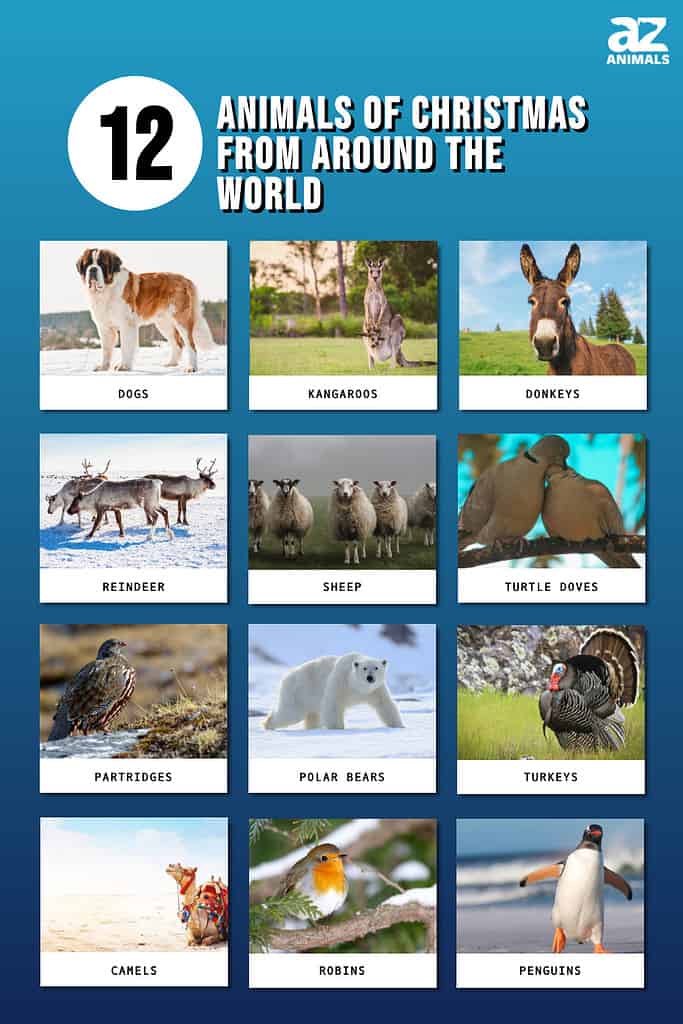
Celebrated around the world come winter, Christmas is many things to different cultures. But beneath the differences, there’s the universal need to share and acknowledge the most wondrous things that we have: family, faith, children, and love.
There are a variety of Christmas animals we associate with as symbols of the most wonderful time of the year. Come the winter holiday, these creatures are on tv, under the tree, in the movies, on holiday cards, in decorations, and in pictures.
Here are a dozen of the feathered or furry friends we love during that joyous December holiday of remembrance.
#12. Penguins
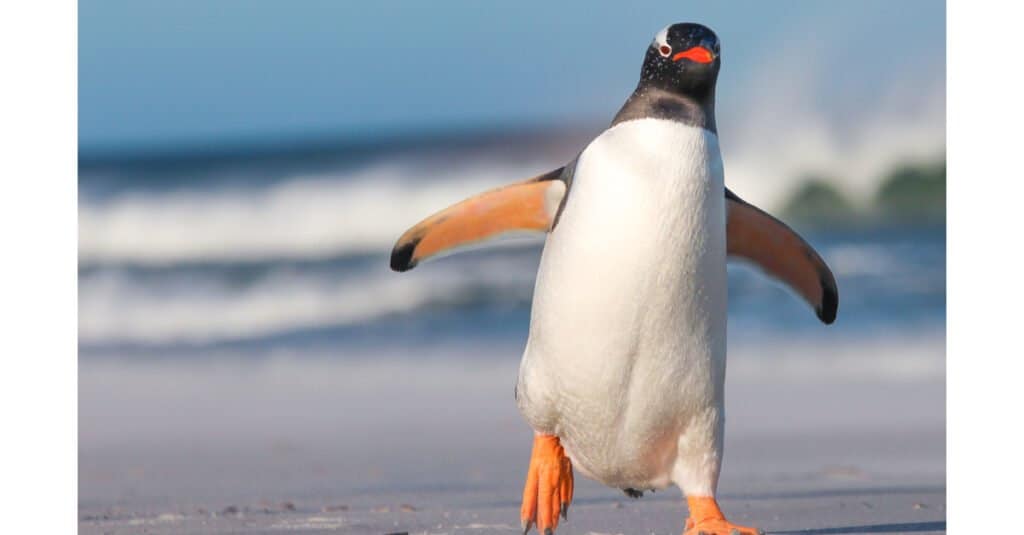
.
©fieldwork/Shutterstock.com
Penguins are all over the holiday. The truth is we only tie the cute, flightless bird with Christmas because they live in cold climates. Some species, like the Gentoo, chinstrap, and emperor penguin, actually live in warmer climates.
Here’s the irony: We link penguins and Christmas because of the North Pole. Penguins actually reside in the icy environments of Antarctica, its neighboring continents, and the South (not North!) Pole.
Though we almost always see them on land, penguins spend the majority of their lives in water and do a ton of hunting below ocean surfaces.
#11. Robins
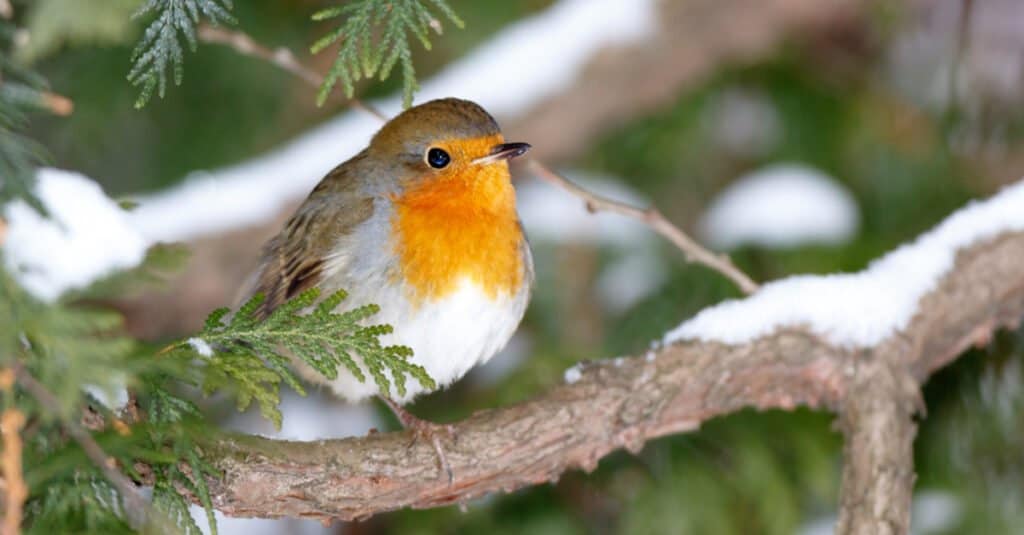
©Vishnevskiy Vasily/Shutterstock.com
Throughout the English winter, the robin is a treasure. Once upon a day, Victorian postmen had the nickname “robin,” noted for their bright red jackets. The sight prompted a series of images of red-breasted birds delivering mail during the holidays.
American robins are also familiar sights. They are often tugging at earthworms. The bird’s famous for its cheery singing and brightly colored chest.
The robin makes its first appearance near the end of the winter. They’re noted for being the first to start the day singing and the last to stop at the day’s end.
#10. Camels
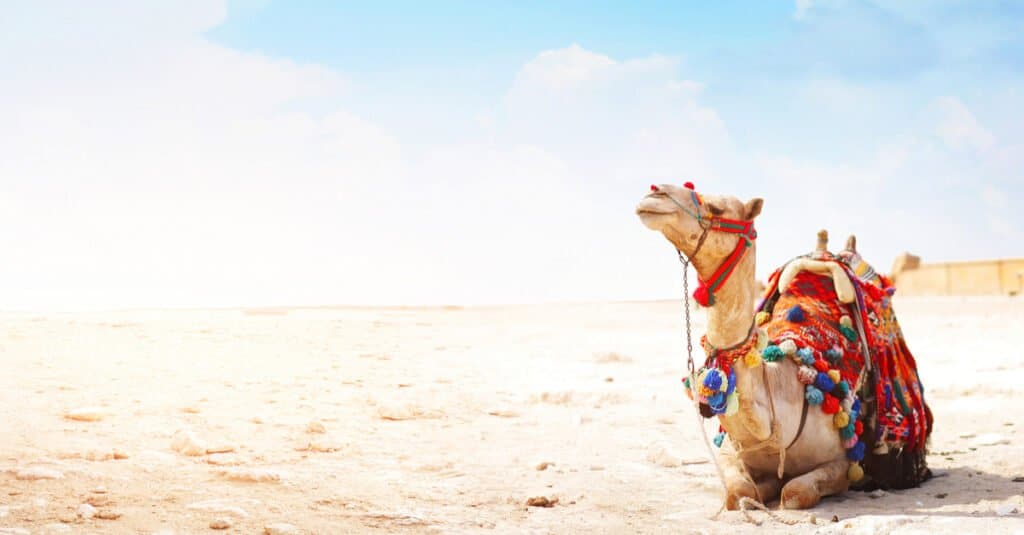
©Dudarev Mikhail/Shutterstock.com
Yes, they’re out there in the desert but there is no more famous Christmas symbol than the three kings reaching Bethlehem on these beasts. The image is synonymous with the Christmas holiday.
Interestingly, the Bible makes no mention of camels. The book speaks of wise magi bringing gifts to the baby Jesus, but not of how they made the trip.
Camels are tough creatures with two rows of eyelashes and three sets of eyelids. The setup prevents sand from getting in their eyes. Their lips let them forage thorny plants other creatures can’t eat. Thick pads of skin allow them to be comfortable in extremely hot sand.
Camels can go great distances without water. But when they find it, they’re capable of consuming 40 gallons.
While having decent temperaments, an angry camel will spit at you if they sense a threat.
#9. Turkeys
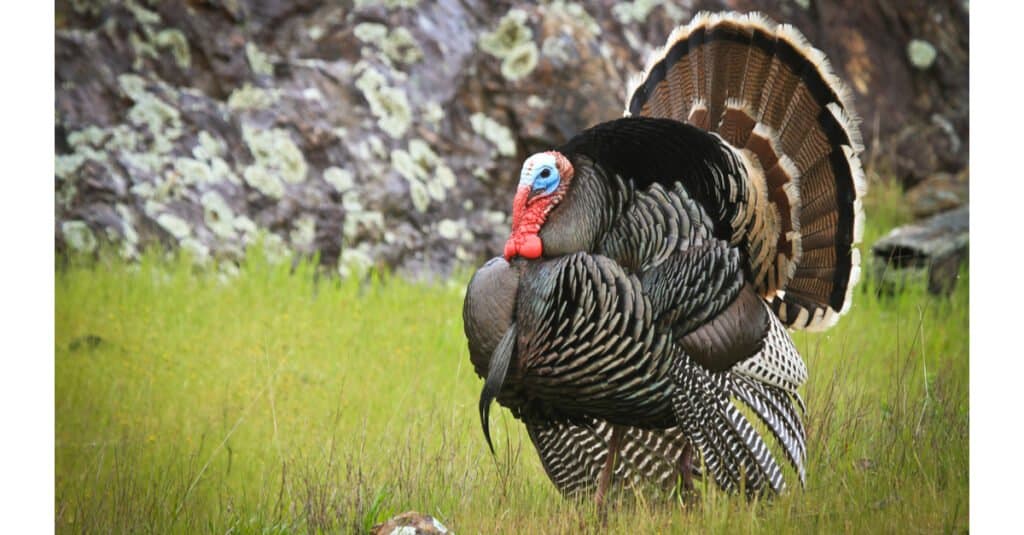
©Tory Kallman/Shutterstock.com
Until the 16th century, the golden bird for Christmas dinner was actually a goose.
Today, American culture associates turkey with Thanksgiving and Christmas via settlers and natives who dined together. But Christmas turkey goes back to Henry VIII who personally made the bird a staple. It’s rumored Queen Victoria reopening trade with the U.S. and importing turkeys influenced the traditional holiday dinner.
The English sovereigns were by no means the only historical figures enamored with the large clucking avian.
A popular myth about Benjamin Franklin has it that he considered the turkey a bird of courage (albeit, slightly vain and silly). The first President of Pennsylvania was also convinced the avian was actually quite capable of taking on enemy soldiers trespassing on its farm!
Turkeys classify as Galliformes. The family includes a set of ground-feeding, heavy birds like pheasants, chickens, and grouse.
Roaming in the millions, turkeys are in every state of the country except Alaska. Most turkeys are wild, feeding on insects, seeds, lizards, and frogs.
#8. Polar Bears
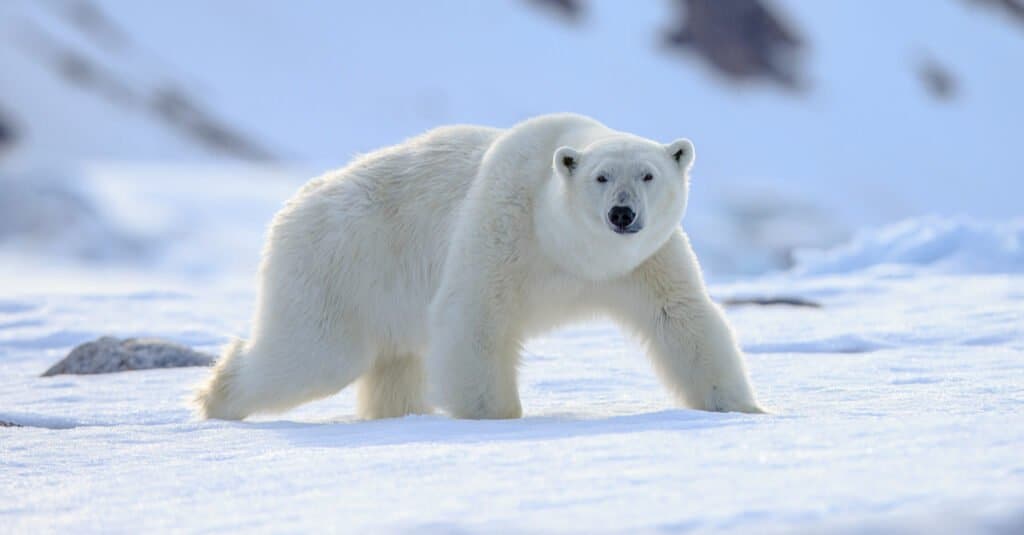
©Vaclav Sebek/Shutterstock.com
Polar bears, like penguins, have become symbols of the winter holiday only because of their proximity to snow and cold. But like the penguin, polar bears are not found in the North Pole. They live in the Arctic and Canada.
The polar bear’s white coat is a gift from Mother Nature. It allows the animals to hide in their environments, where they often are mistaken for snowdrifts.
#7. Partridges
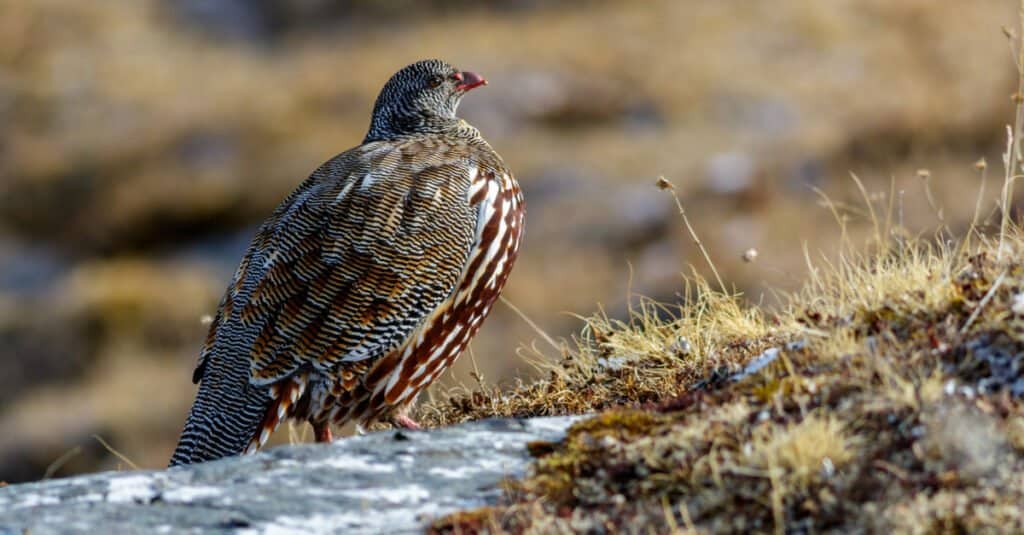
©Bhavesh Rathod India/Shutterstock.com
Partridges are not found in pear trees. They’re ground birds. But thanks to that repetitious lyric in “12 Days of Christmas,” these animals are one of Christmas’s favorite creatures.
Partridges are relatives of the pheasant and traditional game in England. It’s believed the cute partridge referred to in the Christmas carol is a grey or English partridge.
Partridges have a light-colored plumage. Their bodies are chicken-like, but plumper with small heads. The partridge weighs less than a pound and measures about a foot in length.
#6. Turtle Doves
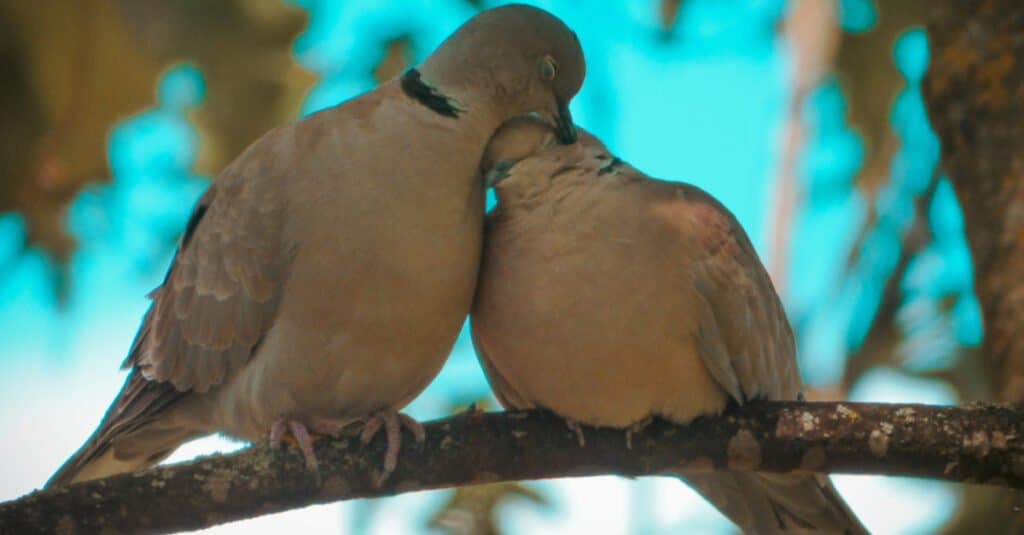
©petritzaa/Shutterstock.com
Two turtle doves make for a perfect image as these birds form strong bonds. They’re known for life-long relationships of love, devotion, and friendship.
Turtle doves are vibrant animals with a charming call. In the United Kingdom, the birds feed mostly in arable and mixed farmland. Their diet is crop grains and wildflower seeds left on the ground. They roost and nest near feeding spots, usually on open woodland edges, scrub and hedgerow areas.
#5. Sheep
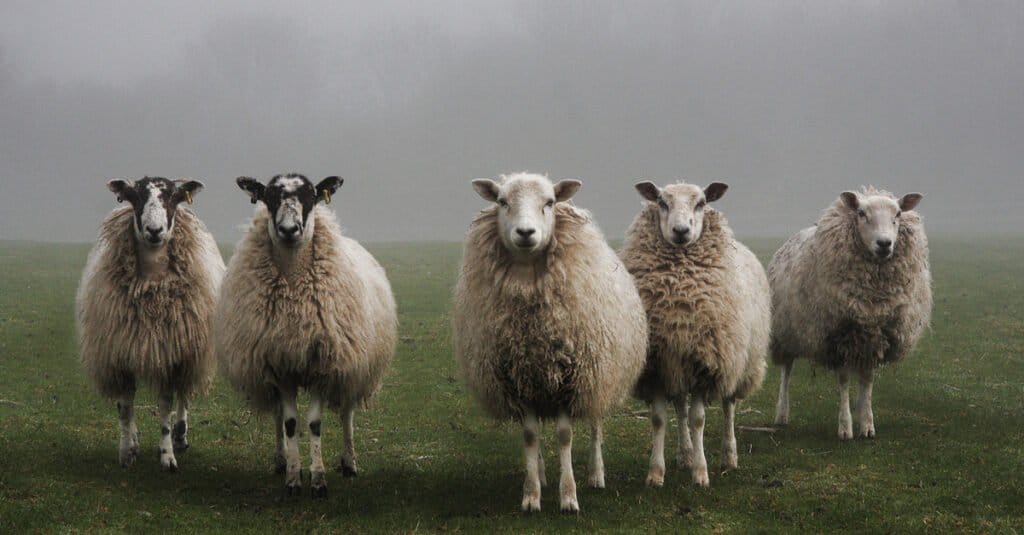
©Paul Steven/Shutterstock.com
You won’t find a Nativity scene without a sheep somewhere in the vicinity. Sheep play a vital role in the Christian faith. So, it’s not surprising they’re in the manger. The creatures are mostly docile and defenseless, famous for their gentleness.
Sheep share a family with cattle, antelopes, goats, and muskoxen, all mammals of cloven hooves. Many sheep have curling horns and all have wooly exteriors.
With all due respect to man’s best friend, the sheep are among the first domesticated creatures. There are wild sheep across the globe, particularly in Central Europe, North America, Asia, and the Middle East.
Unsettling fact: if a sheep ends up on its back it could die. They are not adept at getting back up without aid. This happens often with pregnant ewes and sheep with full fleeces.
#4. Reindeer
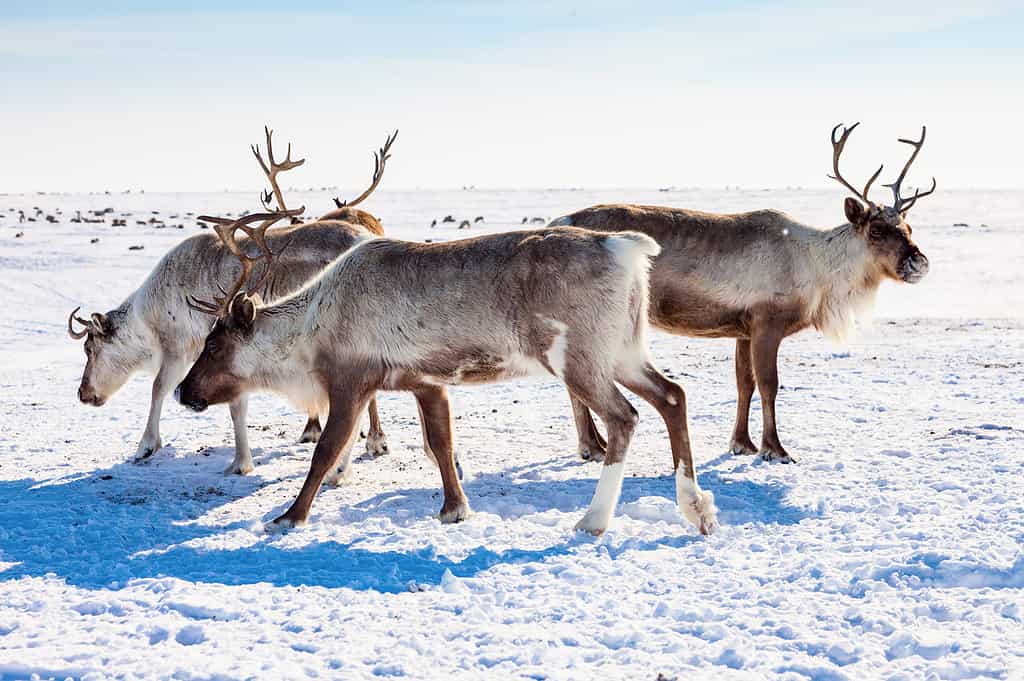
©iStock.com/Artpilot
There is no animal more representative of Christmas than the trusty reindeer.
The root of the image of Santa’s sleigh and his reindeer comes out of “The Night Before Christmas.” It’s commonly believed the first symbols of flying reindeer helping St. Nick appear here. Others, however, joke that reindeer got associated with flying because they tend to partake of hallucinogenic mushrooms.
North America is the only segment of the world where reindeer have a different name and that’s Caribou. In most deer species, only males grow antlers. With reindeer, both sexes have antlers. Reindeer are nomads, rarely staying in one place for long. They have layered coats that keep them cozy in the chilliest temps.
#3. Donkeys
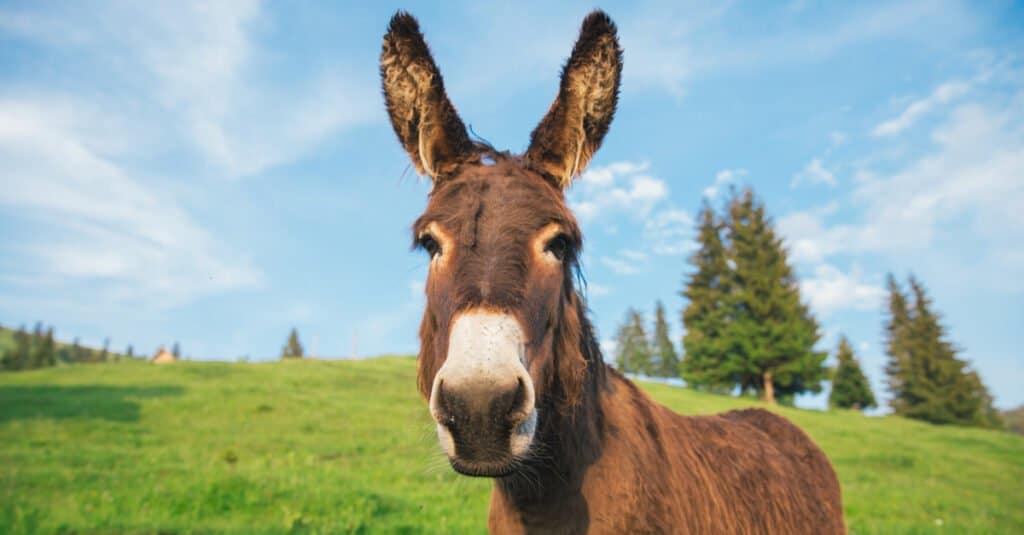
©Angyalosi Beata/Shutterstock.com
There’s no mention of how Mary made the 80-mile trek to Bethlehem but it was most likely on the back of a donkey. Donkeys often show up in manger scenes which reinforces the idea. These pack mules were the usual transport for the poor. Camels were for the elite. Horses were war animals or used by the wealthy.
Donkeys are everywhere and members of the family include zebras and horses. The donkey has floppy, long ears and is more likely to be stockier. You have donkeys that are feral, wild, and domesticated.
#2. Kangaroos
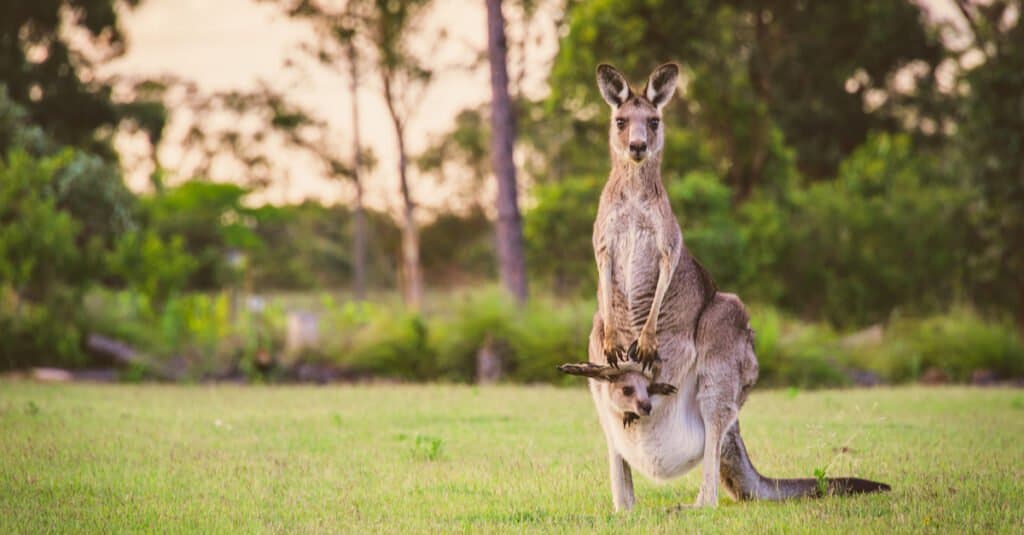
©IntoTheWorld/Shutterstock.com
In Australia, the legend is kangaroos, not reindeer, pull Santa’s sleigh. On the ground, the marsupials can hit 35 miles per hour. They also have the ability to leap 25 feet in the air. So, if they could fly, it’d be impressive.
These animals travel in groups we call mobs. The size fluctuates based on the season and the availability of water and food. And, of course, the kangaroo has the famous pouch. It’s guessed considering how fast these animals move (20 feet in a single bound; up to 50 miles per; 9 feet high), a passenger is going for a jarring ride.
Their leaps aren’t always spot-on. The kangaroo gets caught trying to leap over fences when they don’t come at the leap straight on.
#1. Dogs
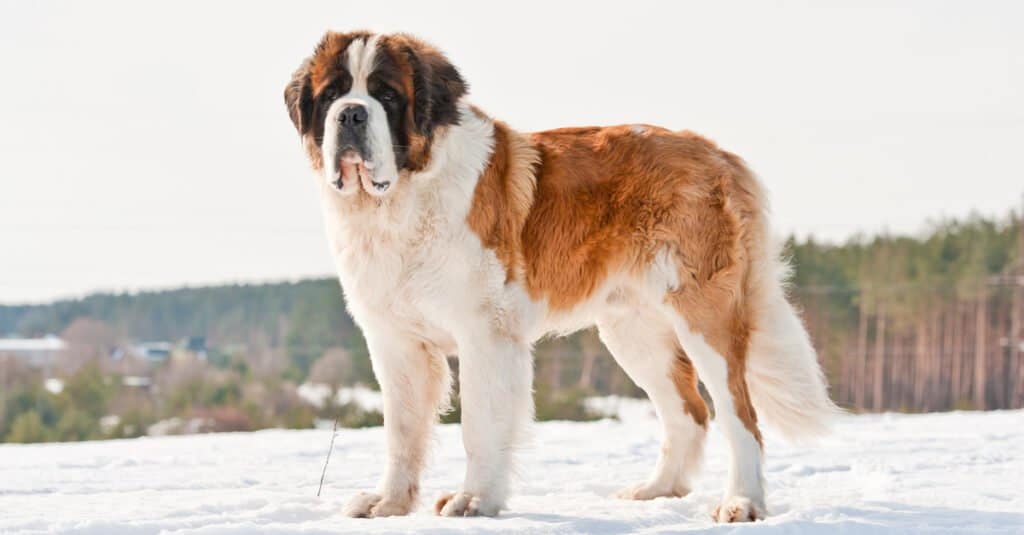
Santa Paws
to the pup inThe Grinch
, dogs are an essential part of the Christmas movie line-up.©Rita_Kochmarjova/Shutterstock.com
The dog is easily the most popular animal in the world and, if they have a social temperament, doggies thrive on the festivities and chaos of Christmas.
Where the link between dogs and Christmas started seems to have no real origin story but there’s no doubt we love the idea of cute canines and Christmas. There are more Christmas movies centered around dogs than you can shake a dog tail at. Families love putting their pooches up in holiday outfits and including them in the holiday photo. One of the most popular gifts during the winter holiday is puppies.
It’s also a risky season. So many of the foods we feast on can be a threat to doggy health. While your beloved pet can chow down on turkey and cheese, keep them away from chocolate, nuts, onions, raisins, and Christmas pudding.
Your dog is a great friend and companion and a lot of its joy come through its owners. They feed on your feelings and it is probably why dogs love sharing Christmas with you!
The photo featured at the top of this post is © Kertu/Shutterstock.com
Thank you for reading! Have some feedback for us? Contact the AZ Animals editorial team.






